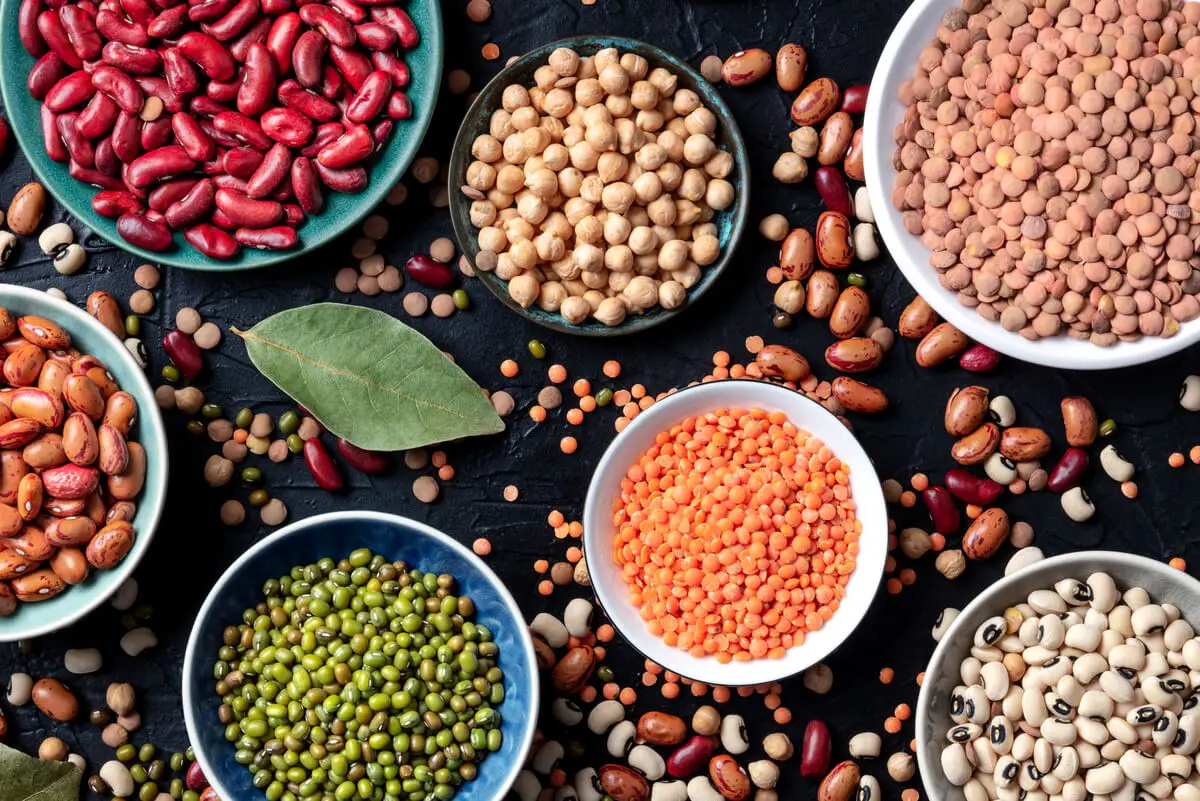A Vegetarian Diet for Patients with Diabetes: Tips for Planning One


Written and verified by the nutritionist Maria Patricia Pinero Corredor
The mortality statistics of diabetes and its complications have made it a real public health problem. Changing to a healthier eating pattern has become a major prevention and treatment measure. But does the vegetarian diet work for patients with diabetes?
Different versions of vegetarian diets have proven to be as beneficial as conventional diets. However, they have to be implemented correctly.
This includes consuming adequate portions of nutrients and calories according to individual requirements. Hence, certain tips are necessary to make them work better.
In this article, we’ll give you general guidelines that will allow you to adequately follow a vegetarian diet for patients with diabetes. Therefore, if you continue reading this article, you can help to decrease the statistics of this dreaded disease.
Read also: Nutritional Treatment for Type 2 Diabetes
What’s a vegetarian diet?
The vegetarian diet includes all foods of vegetable origin and excludes meats and their derivatives. Depending on the degree of exclusion, we find the following:
- Vegan: In which no animal food is consumed.
- Lactovovovegetarian: In addition to vegetables, eggs, milk and dairy products are consumed.
- Lactovegetarian: Only includes milk and its derivatives as foods of animal origin, but not eggs.
- Minor variants: Ovo-vegetarian (eggs and vegetables) and semi-vegetarian (fish and poultry are allowed).
How does the vegetarian diet influence diabetes?
The treatment of diabetes is based on 3 fundamental pillars: a healthy diet, regular physical activity, and medication. The first two are applied preventively. But in addition, in the case of diet, it’s a viable and irreplaceable option for its protective capabilities.
Vegetarian eating patterns are low in saturated fat, cholesterol and sodium. They’re also high in fiber, potassium and unsaturated fatty acids. The vegetarian diet can maintain blood sugar control, regulate body weight, and decrease disease complications.
Benefits of a vegetarian diet for patients with diabetes
The nutritional characteristics and properties of a vegetarian diet benefit the treatment of several diseases. In particular, that of diabetes. Let’s see why.

Controls body weight
Vegetarian meal plans are lower in calories when compared to conventional ones. This favors weight loss in obese diabetic patients, regularizing the body mass index.
In addition, by maintaining good weight control, blood sugar tends to normalize. The risk of frequent complications of diabetes is reduced.
Reduces cardiovascular complications
Vegan diets are cholesterol-free and low in saturated fat, which is considered a cardiovascular protective factor. Also, the higher dietary fiber content can regulate elevated blood lipid levels.
Controls blood sugar and insulin response
Vegetables, fresh fruits, legumes, whole grains, and nuts can help control blood sugar and improve insulin response.
However, overconsumption of certain vegetables and by-products, especially those rich in simple sugars and starches (bread, rice, potatoes, overcooked pasta), can negatively affect blood sugar.
You may be interested in: Diabetes and High Blood Pressure: What Can You Eat?
Tips for planning a vegetarian diet for diabetic patients
The first tip for following a vegetarian diet with diabetes is to consult a nutritionist, who will individually assess the patient’s health condition. In addition, they will establish the caloric requirements of macro and micronutrients to be ingested during the diet.
In the case that the diet isn’t strictly vegetarian…
Depending on the type of vegetarian diet, some foods of animal origin may or may not be considered. If this is the case, then you must know how to choose which products will be included.
If eggs are included, it’s recommended to use about 5 egg whites a week, as they don’t contain fat. However, it’s also allowed to eat about three yolks a week and, in case of high blood lipids, only two.
Cheeses should be lean or fat-free. Ricotta or cottage cheese can be a good choice, as they contain low values of saturated fat. Milk and yogurt should be low-fat.
If white meats are allowed in the diet, oily fish such as salmon, mackerel, sardines, or tuna are recommended. These contain high contents of omega-3, which prevent cardiovascular diseases.
Poultry meats should be prepared without their skin and preferably using lean cuts. Roasting, baking or grilling is recommended to avoid using fat in cooking.
Select vegetables with a low glycemic index
The glycemic index (GI) of a food is a number that indicates the speed at which it raises blood sugar. This value is compared to a reference element, which could be glucose or white bread.
There are foods of vegetable origin with a high GI, that is to say, they increase blood sugar quickly. For this reason, they should be avoided in patients with diabetes.
According to the American Diabetes Association, bread, sugar, potato, pumpkin, white rice, wheat flour, pineapple and melon have a GI higher than 70. While brown rice, oat bran, parboiled rice, legumes, carrots and most fruits have a low GI (less than 55).
Consume vegetables rich in fiber
Fiber is a nutrient with recognized health benefits. In the case of soluble fiber, it can regulate the rate of absorption of carbohydrates. In this way, it is able to control blood sugar.
Pectin, mucilages, and beta-glucans are examples of soluble fibers. To increase them in your diet, eat legumes, such as beans, lentils, peas and chickpeas.
Include all fruits except avocado, olives, watermelon and pineapple. Also select whole grains, such as quinoa, oats, barley and amaranth.
As for intake, the American Diabetes Association recommends between 20 to 35 grams (0.8 to 1.4 oz) per day of fiber to control sugar and insulin in diabetic patients. For this reason, it is advised to eat the following:
- 3 daily servings of vegetables: tomatoes, cucumbers, carrots, cauliflower, broccoli, cabbage, zucchini, artichokes, and spinach.
- 2 servings of fruits: apples, plums, grapes, pears, peach, kiwi, grapefruit, berries.
- 5 servings of whole grains.
- 4 to 5 servings of legumes.

Use the right type and amount of fat
Although vegetable oils contain essential fatty acids and omega-3, the amount established by the health professional should be consumed. In addition, fats and oils are a source of energy. One gram provides 9 calories, which is more than double what proteins and carbohydrates could provide.
You should avoid fried foods, dressings with oil, avocados, peanut butter, olives, and cream. Remember to preferably use olive oil.
Distribute carbohydrates at the same time
The distribution of the number of carbohydrate intakes throughout the day should be the same every day, including time intervals. Regularity positively influences blood sugar control. Such carbohydrate distribution isn’t applicable to all patients. That will be decided by the nutrition professional.
Prevents deficiency of certain nutrients
Vitamin B12 is a micronutrient found in foods of animal origin, especially milk, yogurt, and eggs. In the case of vegans, there may be a deficiency of this vitamin and, therefore, it’s advisable to take supplements in doses of 5 micrograms daily.
A vegetarian model diet for patients with diabetes
When planning a vegetarian diet for patients with diabetes, each of the above tips should be considered. This model menu ranges from 1200 to 1600 calories per day.
- Breakfast: 1 toast of whole wheat bread with sautéed spinach, chard, and olive oil, 3/4 cup of unsweetened oatmeal flakes, a whole apple, and coffee.
- Snack: fresh fruit salad
- Lunch: 1/2 cup of sautéed spinach with pine nuts, 1 cup of stewed lentils with brown rice, a fruit skewer, unsweetened iced tea.
- Snack: 1/4 cup of dried fruits and nuts.
- Dinner: 3/4 cup parboiled curried rice with mushrooms and chickpeas, 1 cup sautéed zucchini, eggplant and bell bell pepper, 1 fruit skewer.
All cited sources were thoroughly reviewed by our team to ensure their quality, reliability, currency, and validity. The bibliography of this article was considered reliable and of academic or scientific accuracy.
- M José González Corbella. Dietas vegetarianas. Offarm. Vol. 24. Núm. 5. 82-90 (Mayo 2005). Disponible en: https://www.elsevier.es/es-revista-offarm-4-articulo-dietas-vegetarianas-13074471
- Jaana Lindström, Anne Louheranta, Marjo Mannelin, Merja Rastas, Virpi Salminen, Johan Eriksson, Matti Uusitupa, Jaakko Tuomilehto, The Finnish Diabetes Prevention Study (DPS): Lifestyle intervention and 3-year results on diet and physical activity. Diabetes Care. 2003 Dec;26(12):3230-6. doi: 10.2337/diacare.26.12.3230. Disponible en: https://pubmed.ncbi.nlm.nih.gov/14633807/
- Sociedad española de Medicina Interna. SEMI. Diabetes. Disponible en: https://www.fesemi.org/sites/default/files/documentos/publicaciones/informacion-diabetes.pdf
- Dietoterapia y alimentos. Paciente con diabetes mellitus. México: Instituto Mexicano del Seguro Social; 2 de julio de 2015. Disponible en: https://www.imss.gob.mx/sites/all/statics/guiasclinicas/751GER.pdf
- American Diabetes Association ¿Qué puedo comer? La guía de la diabetes sobre las opciones de alimentos saludables. Disponible en: http://main.diabetes.org/dorg/lwt2d/packet-one/what_can_i_eat_sp-web.pdf?loc=lwt2d-es-packet1
- Escudero Álvarez y P. González Sánchez. La fibra dietética. Nutrición Hospitalaria. p. (2006) 21 (Supl. 2) 61-72. Disponible en: https://scielo.isciii.es/pdf/nh/v21s2/original6.pdf
- Carretto, Mª Virginia; Cuerdo, Mª Paula; Dirienzo, Mª Guadalupe; Di Vito, Mª Victoria Aceite de oliva: beneficios en la salud Invenio, vol. 5, núm. 8, junio, 2002, pp. 141-149 Universidad del Centro Educativo Latinoamericano Rosario, Argentina. Disponible en: https://www.redalyc.org/pdf/877/87750812.pdf
This text is provided for informational purposes only and does not replace consultation with a professional. If in doubt, consult your specialist.








